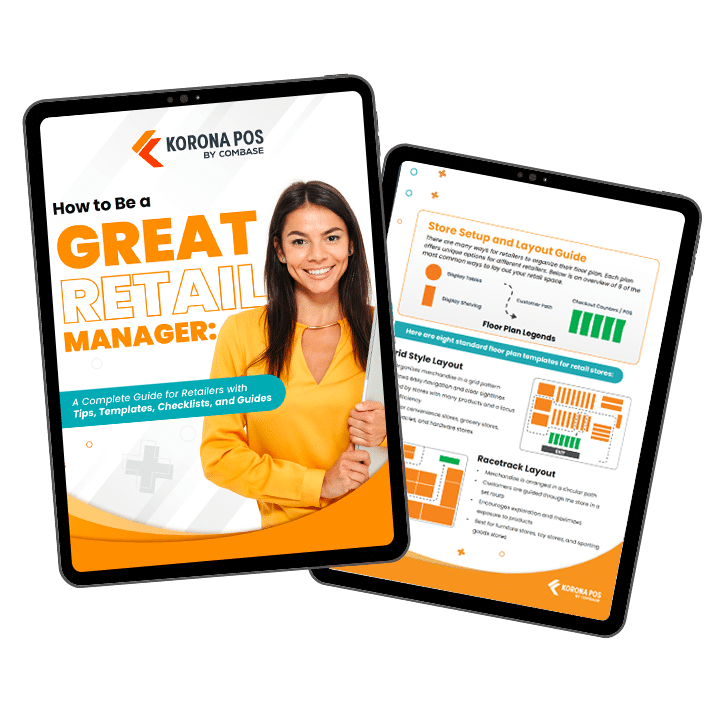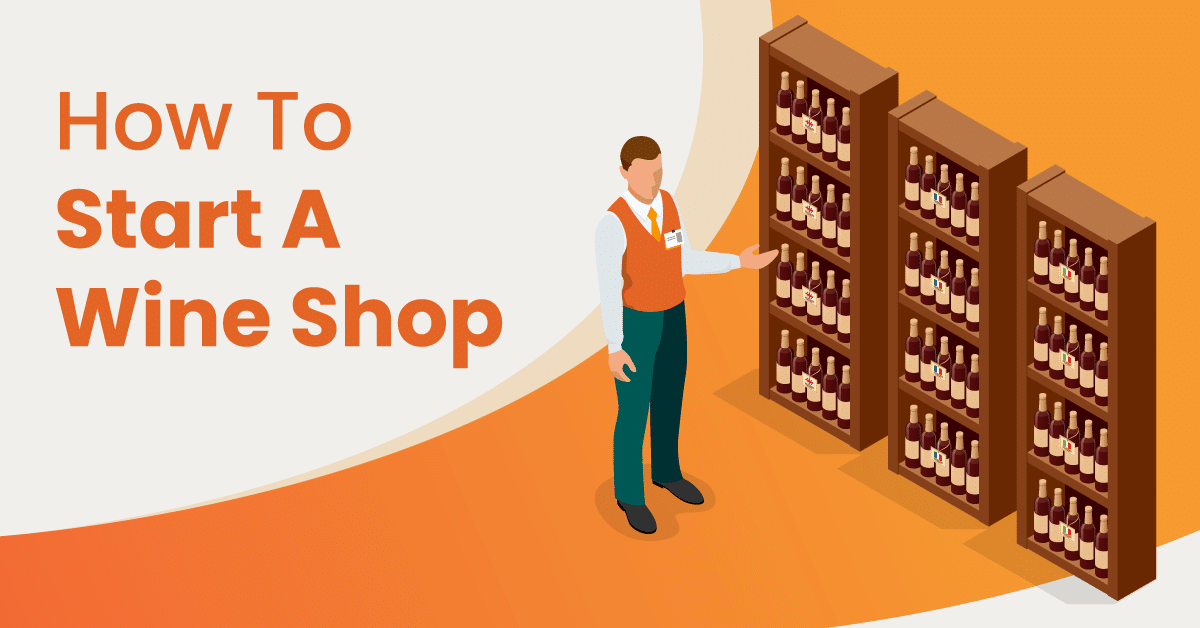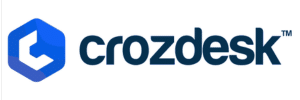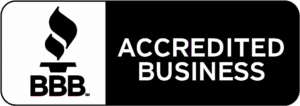Dreaming of opening your own wine shop but unsure where to start? You’re not alone — many aspiring entrepreneurs want in on the $70 billion U.S. wine market but struggle with where to begin.
In this guide, you’ll learn exactly how to open a wine shop, from choosing your niche and securing licenses to designing your space and marketing your business. We’ll walk you through each step with data, expert tips, and real examples — so you can go from idea to grand opening with confidence.
Key Takeaways:
- Opening a wine shop requires a clear niche (e.g., organic, luxury, imported) to target the right customers and differentiate yourself.
- Location, licensing, and regulatory compliance can make or break your business plan.
- Startup capital typically ranges from $50,000 to $250,000, depending on inventory, build-out, and licensing costs.
- Investing in a robust POS system enables you to manage inventory, compliance, and customer relationships from the outset.
Choose Your Wine Niche
Before signing a lease or applying for licenses, determine the type of wine shop you want to operate. Niche markets, such as organic, imported, luxury, or local wines, will shape your customer base and sourcing strategy.
Organic and biodynamic wines, for example, have seen double-digit annual growth, driven by younger consumers prioritizing sustainability (Forbes, 2023). Local or regional wine shops often thrive by building close ties with small vineyards and emphasizing community connection — similar to strategies involved in running a successful liquor store.
PRO TIP!
Choose a niche that aligns with your passion and local demand. If you love European imports but live in a rural area with price-sensitive customers, start small with a mix of affordable and premium labels.
How to Choose the Best Location
Location can make or break your wine shop. Look for high-traffic areas with affluent, wine-savvy consumers, such as those near restaurants, farmers’ markets, or boutique grocery stores.
Zoning laws also matter: not every retail space is cleared for alcohol sales. Always confirm local zoning and neighborhood sentiment before signing a lease. “Dry” zones or anti-alcohol restrictions can halt your plans entirely.
PRO TIP!
Use local chamber of commerce data or Google’s “Popular Times” tool to gauge foot traffic and regional demographics before committing to a location.
Write a Solid Business Plan for Your Wine Shop
Your wine shop’s success will depend on a thorough business plan that meets all the requirements. Here’s what to consider:
Define Your Business Model
Clarify whether you’ll run a boutique retail shop, a tasting room, or a hybrid model with both in-store and online sales. Include a clear revenue model and pricing tiers.
Plan Financial Projections
Detail startup costs, break-even points, and expected profit margins. Wine shops often see gross margins between 30–50%, depending on sourcing and pricing.
Outline Marketing and Operations
Include plans for inventory management, POS systems, staffing, and marketing. A strong business plan fosters investor trust and can help secure financing in the future.
Wine Shop Market Research: Know Your Competition & Demand
Before opening your shop, conduct thorough research. Understanding competition, clientele, and demand will help you design a shop that meets the community’s needs.
Competition
Visit local competitors and assess their offerings, layout, and pricing. Identify service gaps — for instance, do they lack sustainable or small-batch options?
Clientele and Demand
Use census and tourism data to identify your target demographic. Urban markets may favor imported wines, while rural customers might prefer local labels.
PRO TIP!
Conduct simple surveys or host pop-up tastings before opening to gauge interest and refine your stock list.
Get Your Paperwork And Licensing in Order
Before you open, you’ll need the proper business structure and multiple licenses. Requirements vary by state, but the basics include:
Business Structure
Register as an LLC or corporation to protect personal assets.
How to Get an Alcohol License for a Wine Store
Your state’s Alcoholic Beverage Control (ABC) agency handles this process. Expect fees between $300 and $14,000, depending on your state and license type — as outlined in How to Open a Liquor Store in NYC and How Much Is a Liquor License in Texas.
Required Licenses and Permits
- Business License (from your city or county)
- Sales Tax License (for wine sales collection)
- Federal EIN (for tax filing)
- Alcohol License (from your state’s ABC)
- Sign Permit
- Certificate of Occupancy
did you know?
Some states cap the number of liquor licenses available — start your application early to avoid long waiting periods.
Start-Up Costs for Opening a Wine Shop
The cost to open a winery can range from $100,000 to $250,000, depending on your location, niche, and scale. Rent and store location usually make up the most significant portion of expenses, so choose wisely.
Initial Inventory
- Budget $30,000–$60,000 for starting stock, depending on your wine niche.
- Track margins and optimize pricing using our Gross Profit Margin Calculator.
Equipment and Furnishings
- Wine racks, coolers, shelving, signage, and décor can cost between $15,000 and $25,000.
Renovation & Store Build-Out
- Renovations, flooring, lighting, and custom shelving can add $20,000 to $50,000, depending on your space.
- Proper climate control for wine storage is critical to avoid spoilage.
Technology & POS Systems
- Implement a POS system, such as KORONA POS, to manage inventory, sales, and compliance.
- Expect $2,000–$5,000 for setup and hardware.
Marketing & Grand Opening
- Budget $5,000–$10,000 for signage, social media campaigns, tasting events, and local promotions.
- First impressions matter; invest in both online and offline visibility.
Licensing and Legal
- Licenses and professional services (such as those provided by lawyers and consultants) often cost $5,000–$10,000.
- Alcohol licensing varies by state.
Staffing Costs
- Include initial payroll and training for staff, typically $10,000–$20,000 depending on team size.
- Well-trained employees can boost sales and improve customer experience from day one.
Working Capital / Contingency
- Set aside 10–20% of total startup costs to cover unexpected expenses and the first 3–6 months of operations.
- This ensures smooth cash flow while your shop builds a customer base.

Free printable templates and checklists to help you manage retail operations with ease
Find Financing for Your Wine Shop
Explore SBA loans, local grants, or small business lines of credit. Many owners also partner with investors or use their personal savings for the initial stock purchase.
Some credit unions even offer programs for “craft beverage” businesses, so be sure to explore those niche options as well.
Designing and Setting Up Your Store
Create an inviting space that matches your brand. Warm lighting, curated shelving, and clear product signage improve both aesthetics and sales.
Ensure your layout encourages browsing and impulse purchases. Using a POS system with inventory insights, such as KORONA POS, can help design efficient flow and display strategies.
Build Relationships with Suppliers
Strong supplier relationships ensure consistent quality and better pricing.
1. Source Distributors
Start with regional distributors that specialize in your niche.
2. Negotiate Contracts
Negotiate case discounts or promotional support for exclusive offerings.
3. Manage Seasonal Inventory
Use data to anticipate demand spikes.
4. Optimize Shipping
Learn how to ship alcohol legally and safely to customers or other locations.

How to Market Your Wine Shop (Online & Offline)
In a world that increasingly prioritizes visuals and branding, how you market your wine shop will significantly impact your success. Here are some tips:
Instagram Marketing
Showcase tasting events and featured bottles. Consistent posting builds brand visibility.
Local SEO
Utilize Google My Business, Yelp, and wine-specific directories to enhance local visibility and discovery.
Events and Tastings
Organize wine tasting events to attract local customers.
In-Store Promotions
Use impulse items and strategies like POS marketing to boost sales.
Managing Operations and Inventory With the Right POS System
A robust POS system is essential for smooth day-to-day operations, ensuring compliance, and automating stock replenishment. The right system saves time, reduces errors, and helps your wine shop scale.
Inventory Management
Learn how liquor stores manage inventory to avoid overstocking or running dry on best-sellers. A POS like KORONA helps you track every bottle in real-time, avoiding both overstocking and empty shelves.
Employee Training
Use your POS system to streamline staff onboarding with built-in guides and training modules. Well-trained employees can upsell effectively and improve customer satisfaction.
Customer Loyalty
KORONA POS allows you to implement digital rewards, track repeat customers, and run targeted email promotions. Loyalty tools help turn first-time buyers into lifelong patrons.
Sales & Insights Analytics
KORONA POS provides detailed sales reports and forecasting tools so you can spot trends and optimize your product mix. Data-driven insights enable you to make informed decisions regarding pricing, promotions, and seasonal inventory.
Discover Advanced Analytics and Custom Reports
Speak with a product specialist and learn how KORONA POS can work for your business.
Common Mistakes to Avoid When Opening a Wine Shop
Avoiding common pitfalls can save you time, money, and headaches. Here are key mistakes to watch for.
Mistake #1: Underestimating Costs
Misjudging startup expenses or overordering inventory can strain cash flow. Base orders on real sales data before scaling.
Mistake #2: Ignoring Compliance
Missing licenses or permits can shut you down fast. Check all local, state, and federal regulations.
Mistake #3: Ignoring Customer Preferences
Stock that doesn’t match seasonal or regional tastes won’t sell. Track trends and adjust your selection accordingly.
Mistake #4: Skipping Digital Marketing
Relying only on foot traffic limits growth. Invest in social media, SEO, and online ordering.
Mistake #5: Holding Surplus Inventory
Old stock ties up space and money. Promote, bundle, or clear surplus inventory efficiently.
Manage Sales, Inventory, and Compliance with KORONA’s All-in-One POS System

Running a successful wine shop requires smart operations and compliance management. KORONA POS offers integrated tools to streamline sales, automate stock tracking, and simplify tax reporting.












